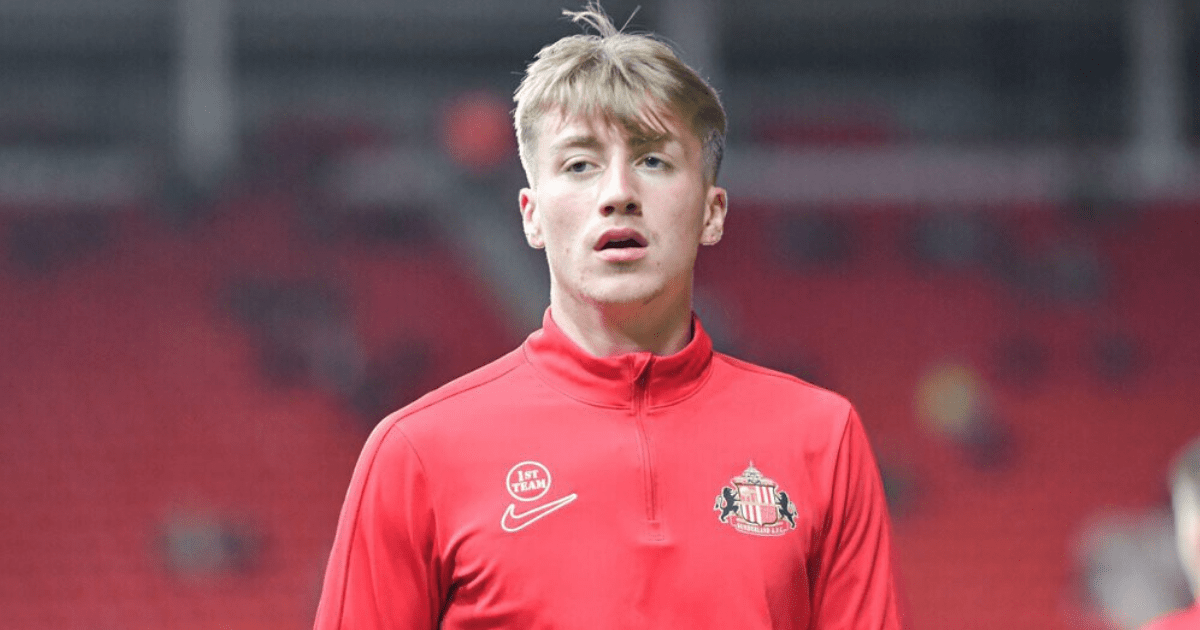Saints set sights on Jack Clarke
Russell Martin's Southampton are looking to secure the signature of Sunderland's Jack Clarke as they aim for a Premier League return.
The Championship standout winger, 23, has caught the attention of several Premier League clubs, with Southampton preparing a £15 million bid for him.
Premier League aspirations
Former Tottenham player Clarke is eager for another shot at the top flight and is willing to make a move if Sunderland does not achieve promotion.
Aside from Southampton, Brentford is also interested in the talented player, while West Ham was rumored to be considering a January bid for the 15-goal scorer.
Competition for Clarke
Crystal Palace is keeping an eye on Clarke and could make a move in the upcoming summer transfer window, especially if Michael Olise departs. Italian giants Lazio have also shown interest, reportedly submitting a £15m offer for the winger last month.
It's worth noting that Tottenham has a 25% sell-on clause for Clarke, which might influence Sunderland's valuation of the player.
Additional signings
Southampton is not only pursuing Clarke but also has a £15m deal lined up for Manchester City defender Taylor Harwood-Bellis. The 22-year-old is currently on loan at St Mary's, with the potential for a permanent move if Southampton secures promotion.
Martin's team is currently two points off an automatic promotion spot, with a game in hand over second-placed Leeds. Despite a recent loss to Bristol City, they bounced back with a 2-0 victory over West Brom.
HOW TO GET FREE BETS ON FOOTBALL
Frequently Asked Questions
Should I use compression gear while playing football?
Compression gear like shorts, leggings and tops may be beneficial for players of football. These items can help improve blood circulation, reduce muscular fatigue and speed up recovery following a match or training. It is believed that the material’s tight fit also helps to stabilize muscles. Compression gear can be worn by anyone, but comfort is the most important factor to consider when choosing such equipment.
How do you choose the right football boot for your playing surface?
Choosing the right football boot depends on the surface that you’ll play on. Metal studs are recommended for natural grass pitches (FG, firm ground), as they offer traction and stability. For artificial turf, boots with numerous small rubber studs (AG – artificial grass) or a flat sole (TF – turf) are designed to offer better grip and reduce the risk of injury. Indoor courts (IN), which are a type of court, require non-marking soles. This is to prevent surface damage and ensure proper movement.
What kind of goalkeeper gloves provides the best grip and protection?
Goalkeeper gloves with a latex palm offer the best grip under various playing conditions. The density and thickness of the latex can be changed to balance grip and durability. Moreover, gloves with finger protection systems – including spines or stiffening materials – can prevent hyperextension injuries to the fingers. It is important that the gloves are comfortable and fit properly to ensure that goalkeepers can perform at their highest level.
What are the factors I should consider when buying a soccer?
Consider the material and construction when choosing a ball. Standard size for adults and players above the age of 12, is 5. Younger players should use smaller sizes appropriate for their age. Leather for natural grass surfaces and synthetic materials on rougher surfaces are the best options. Thermo-bonded footballs are more waterproof and retain their shape better than those stitched. Durability and flight stability should also be considered.
Why are shinguards compulsory for footballers?
Shin guards, which protect the lower legs against injury during collisions and tackles, are an essential piece of football equipment. They help in safeguarding the shins from serious injuries like fractures or severe bruising. The football governing bodies enforce the wearing of shinguards to ensure player safety.
Statistics
- Globally, the demand for lightweight football cleats has risen by about 30% in the past decade, reflecting changes in player preferences and playing styles.
- Approximately 40% of amateur football players wear boots that are not properly fitted, increasing the risk of foot injuries.
- Research has indicated that around 60% of football-related ankle injuries could be mitigated with the correct choice of footwear.
- Around 25% of youth football players have reported using equipment that is either outdated or not suited to their position on the field.
- Compression garments are used by about 50% of professional football players during training sessions for muscle support and injury prevention.
External Links
prodirectsoccer.com
soccer.com
nike.com
footy.com
decathlon.co.uk
How To
How to choose the correct size and fit of your football cleats
Finding football cleats that fit well is essential for ensuring comfort and maximizing performance. If you are wearing the correct size cleat, there should be about a finger’s width between your longest toes and the cleat. They should fit snugly in the middle of the foot with little or no movement around the heel. The cleat’s upper portion should be snug enough to make you feel secure but flexible enough for your foot to move naturally. For a perfect fit, try on cleats and socks that will be worn in matches.

